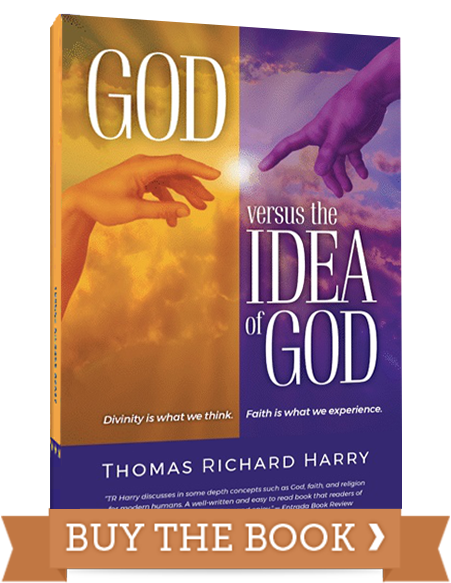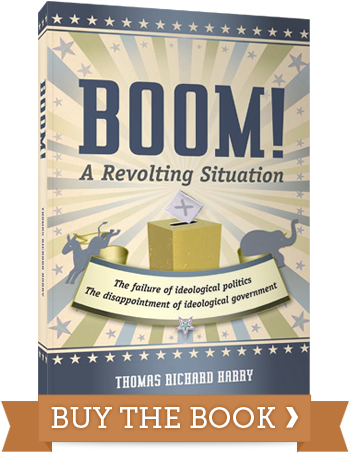The American Family Gazette
Volume I, issue 0903
We delve briefly into what ideologies are in Chapter Four of the Book: value or belief systems. They run from individually held positions describable as extremely liberal to extremely conservative, not only about political matters, but about social, economic and religious issues as well. In most cases our belief systems –liberal to conservative – hold to all these areas pretty uniformly. So, if you tend to view religious or social issues from a conservative (or liberal) perspective, chances are your political views are consistent with such an ideology.
We tend then to support, or at least be sympathetic to, political parties that proclaim our “values” and would, in our opinion, conduct government along lines that protect, promote and expand them. Historically we have had two basic choices: Join the Conservative team and be a Republican, or promote a Liberal viewpoint by voting for the Democrats to conduct government. And in spite of the partisan ups & downs, we seem to have muddled through; progress has been made; Americans enjoy, by most accounts, an enviable position. But there is a risk to the nature of our liberal democracy in the political game we play.
Visualize a classic bell shaped curve. Think of this form as that spectrum of liberal to conservative ideologies. The shape of the curve also approximates pretty closely the normal distribution of our political beliefs: Most of us are somewhere around the middle of the curve, ideologically speaking. That is, we have ideologies, but they tend not to be extreme. Toward the middle of the curve, the majority of us differ most in form but not greatly in content. We may find little to complain about government irrespective of which party is governing. In fact, we may vote this election for one party and next time around for the other, depending upon the issues and the personalities —and still consider ourselves fundamentally partisan. Said differently, politically (and otherwise) Americans generally tend to be both moderate and somewhat tolerant in their outlooks The further you move outward from the center of the curve, the more extreme ideologies becomes; the less tolerance exhibited.
Traditionally you hear that the American political game is always played between the forty yard lines. Metaphorically, this means that the important sector of the voting public the parties must convince to vote their ticket has been around the middle, or the center They expect the more ideologically committed to follow them, so politicians have historically concentrated on winning those of us sitting between the forty yard lines. This meant that to succeed, when in power, they also had to govern with the middle at least contingently in mind.
Historically, our two Parties have pretty well accommodated under their wings those of us who fit ideologically between those forty yard lines. That represents most of us. That’s what we mean when we define the Democrats and Republicans as “big tent” parties .They each have traditionally been able to represent the values of a fairly wide range of “Conservatives” or “Liberals”. It was never perfect. The Parties never represented between them all Americans. But between them a majority of Americans appear to have felt represented. In retrospect, Government under such an inclusive party scheme could well be considered acceptable, or legitimate, as well.
There have always been political alternatives for those holding values & views at the extreme ends of that political curve. Most play their political game down between the 5 to 10 yard lines of the political field. While an uphill battle to be sure, they always have the opportunity to convince others (within the rule of law) of the merits of their political views, thereby increasing both their ideological acceptance and political influence.
The risk in the political game we play is this: Those at the ends of the political field may convince the rest of us to play their game, ideologically speaking. By our definition and their locations on the spectrum, it’s not a moderate one. It’s highly ideological. By its nature it ignores the wills and concerns of many in its pursuit of its ideological political objectives.
A second or variant of risk is that one or the other – or both – of the main parties, in a tight match, decides to forgo the middle, or center, and take their game down to between the 5 and 20 yard lines and settle for a highly ideological “win” if they can pull it off. The hell with the rest of us!
In the first case, the party at the extreme succeeds in shifting the ideological balance of the country in their favor. That’s largely a decision the electorate makes. In the latter case, one party or the other – or both – make the decision not to play primarily in the middle where most of us are, but to conduct their game further down the spectrum of ideology, e.g., to largely ignore any but their own, their base so to speak. They haven’t shifted the ideological balance of the country; they have simply decided, politically, it is not in their best interest—which is to win— to try and sustain a “big tent” philosophy.
Either way, however, the result is the same: Political representation diminishes. Government focuses on pleasing a minority, not the majority. We get imbalance. We also get what we have recently been experiencing: hyper-partisanship in governing. As one or the other Party attempt to govern primarily for results favoring their own ideology, the other as vigorously try’s to block it. The result is that little is accomplished in the halls of government.
In their efforts to battle each other, party leadership in government increasingly demand ideological purity from our elected representatives. There is less and less room or opportunity for moderates of either ideology to influence the direction of governing. The spiral feeds on itself until, as in 2006 and again in 2010, enough of the electorate decides they have had enough and reconfigures congress, in this case, with the other party. The problem with this under current political arrangements is that it is simply a game of musical chairs. After the music stops, and the seats refilled, the game remains the same. We still have but two ideologically separated parties, each struggling against the other to maintain political power with governing for the majority of us as only a secondary consideration. Little in the way of political, social or economic progress should be expected. Issues that have remained unresolved will most likely continue unresolved.
We are adrift.
TRH
8/09






